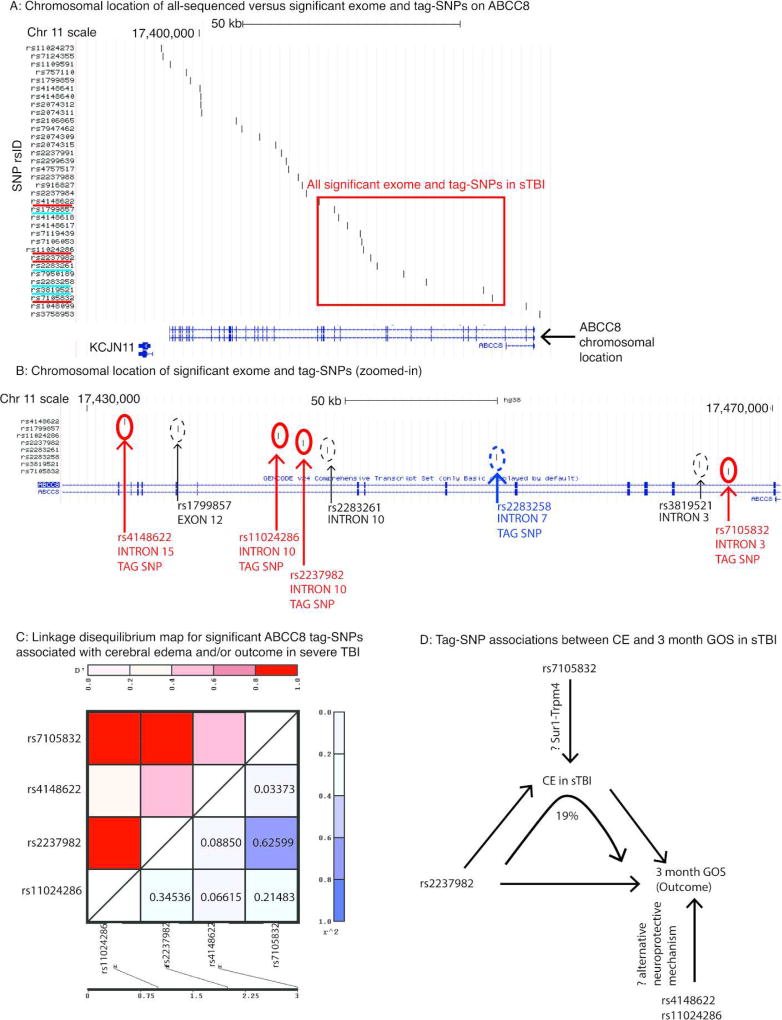Figure 1. ABCC8 tag-SNPs associated with cerebral edema (CE) and/or outcome in severe TBI (sTBI).
A: Graphical display of the chromosomal location of all sequenced versus significant ABCC8 polymorphisms plotted on the University of California Santa Crux (UCSC) genome browser (Assembly version GRCh38/hg38, scale-bar for 50 kilo-basepairs shown). A schematic of the 39-exon ABCC8 gene is on the X-axis. Exons (separated by introns) are marked with vertical lines/blocks. Exon #1 is on the right extreme and exon #39 is on the left extreme of the gene schematic. The vertical axis lists all of the single nucleotide polymorphisms (SNPs) by rsID sequenced in this study as well as a prior exome analysis. Significant tag-SNPs identified in this study (rsID solid red underline) were rs7105832, rs2237982, rs11024286, and rs4148622. SNPs identified in the whole exome analysis as being associated with edema are also shown for comparison (rsID solid blue underline). The chromosomal location of all significant exome and tag-SNPs in sTBI is highlighted (box).
B: Magnified display of the chromosomal location for significant tag-SNPs in sTBI (scale-bar for 10 kilobasepairs shown). Tag-SNP location marked with red circles, labeled with the appropriate rsID). Direct comparison with significant SNPs identified from a previously published whole-exome analysis (dashedcircles) demonstrates consistent geographical clustering between introns 3–15.
C: Linkage disequilibrium plot including r2 values between the four significant tag-SNPs were generated using the Java LINkage (JLIN) disequilibrium plotter program. The results show that none of the r2 values between any of the four tag-SNPs are ≥0.8.
D: Summary schematic of tag-SNPs associated with CE (rs7105832), 3-month GOS (rs4148622, rs11024286), or both (rs2237982). The diagram illustrates that 19% of the effect of rs2237982 on 3-month GOS is mediated via CE, however 81% is not. Moreover, both rs4148622 and rs11024286 are associated with 3-month GOS but not CE. This gives rise to the hypothesis that the association with CE presumably mediated via the Sur1-Trpm4 pathway, may be mechanistically distinct from Sur1 mediated neuroprotection/effect on outcome.

